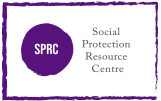Pakistan's Journey towards Universal Health Coverage
By Misbah Rashid – Research Associate at SPRC
Universal Health Coverage (UHC) is a fundamental concept that strives to guarantee that all individuals, especially the underprivileged, can acquire vital healthcare services promptly and conveniently, without undergoing any financial strain. Even though the terminology of Universal Health Coverage (UHC) was officially introduced in 2005 by member states of the World Health Organization (WHO), the concept and ethos of UHC were initially established by the WHO’s founding constitution. The constitution acknowledged health as an inherent right for all and declared in 1948 that “the right to achieve the highest possible standard of health is one of the essential rights of every human being, without discrimination based on race, religion, political views, economic or social status.”
Pakistan’s Triumph in Attaining Universal Health Coverage
Structural and non-structural impediments embedded within Pakistan’s healthcare system are hindering and preventing underprivileged and marginalized groups from accessing essential health services who continue to be disproportionately impacted by substandard quality of healthcare and inadequate access to fundamental healthcare commodities and services.
According to the Economic Survey of Pakistan, health expenditures to % of GDP are only 1.2%. However, in the past years the GDP allotment to the health sector was less than 1%. Despite Pakistan’s healthcare indicators exhibiting improvement over the past ten years due to enhanced healthcare awareness, better accessibility to healthcare services, and increased female literacy, there is still ample room for further progress.

Source: Economic Survey of Pakistan (2022)
Health disparities have increased due to various factors, including socioeconomic class, which has caused many individuals to fall below the poverty line. Specifically, out-of-pocket health expenditures have resulted in numerous families being impoverished as they face catastrophic expenses related to hospitalization during the COVID-19 pandemic. Further, the limited coverage of population and fragmentation of schemes have resulted in a decreased collective impact of social health protection schemes in Pakistan.
The rural population groups, which are already vulnerable, are experiencing a high mortality rate due to a lack of sufficient healthcare resources. Despite having a well-established healthcare infrastructure network, the district health system faces challenges in its implementation, mainly due to the scarcity of qualified healthcare professionals such as nurses, midwives, and pharmacists. Moreover, the existing skill mix is imbalanced, with a disproportionate number of doctors who tend to prioritize their for-profit private practice over public service. Country falls short of the healthcare standards recommended by the World Health Organization (WHO) in several areas, including the doctor-population ratio, the nurse-population ratio, and the hospital beds to population ratio.

Source: Economic Survey of Pakistan (2022)
According to the Economic Survey of Pakistan, Pakistan’s progress towards achieving the Sustainable Development Goals (SDGs) has been noteworthy, as reflected in its improved SDGs Index score. The score has increased by 19.5% from the baseline of 2015, rising from 53.11 in 2015 to 63.5 in 2020.
After the 18th Amendment to the Constitution was passed in 2010, a significant portion of social welfare provision, including healthcare and education, was devolved to the provinces. Consequently, provinces are now responsible for developing their own social protection policies, which has led to an expansion in provincial social welfare programs that reflect regional priorities.
In terms of health coverage, Pakistan has made advancements by providing inpatient coverage to the most vulnerable individuals through the Sehat Sahulat Program (SSP), which is a micro health insurance scheme started in 2016. Additionally, in 2019, the Ehsaas Strategy was introduced as a multi-sectorial and multi-stakeholder approach to mitigate fragmentation, to provide social protection and enhance coordination among the various institutions responsible for implementing national poverty reduction and social protection programs. These initiatives are aimed at benefiting the mustahiq (deserving) population, and include healthcare schemes like the Sehat Sahulat Program, as well as broader financial assistance programs such as Bait-ul-Mal 4 and Zakat.
Despite the fact that access to basic healthcare should be considered a fundamental human right, it is currently determined by an individual’s ability to pay. The COVID-19 pandemic has exposed the long-standing issue of unequal access to healthcare not only in developing but also in developed countries. It has highlighted the importance of providing equitable healthcare and acknowledging that health security is not just a symbolic concept, but is rooted in fairness and equality. It is hoped that Pakistan will expand its healthcare safety net to protect the poorest segments of society, and ultimately achieve to goal of Universal Health Coverage (UHC) by 2030.

